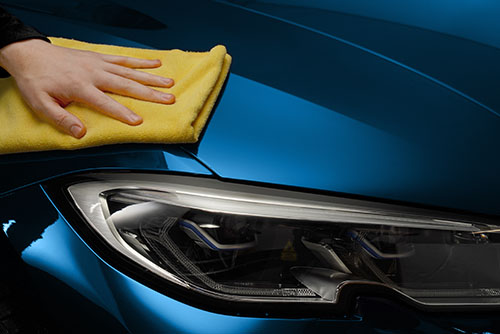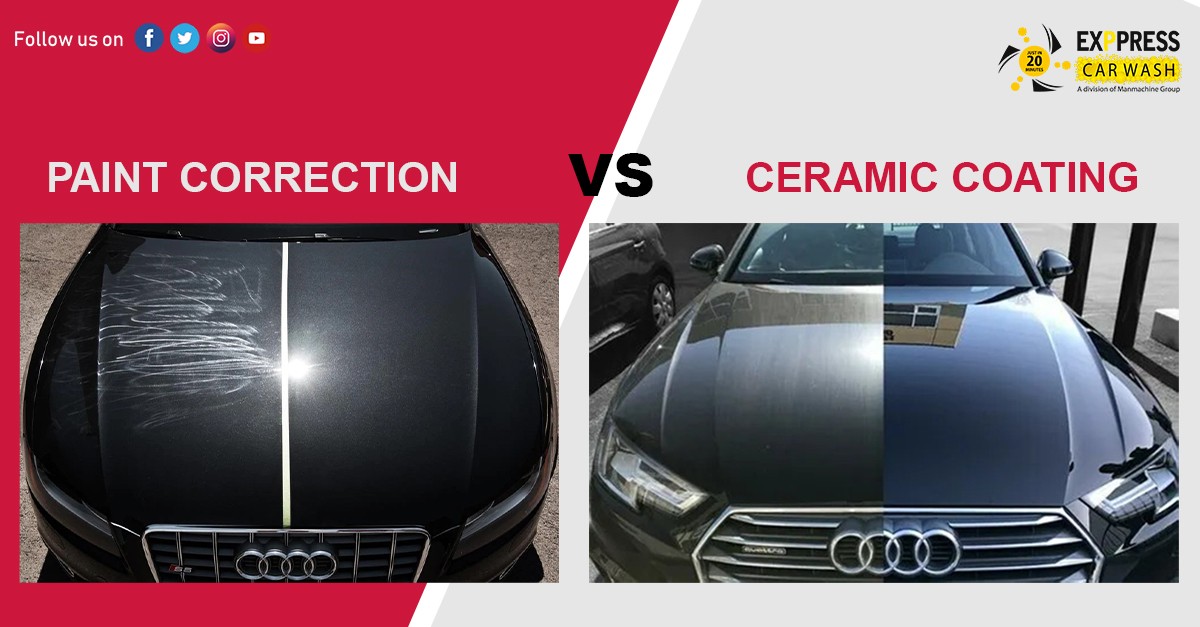Ceramic Coating vs. Conventional Wax: Which is Right for Your Vehicle?
The Role of Ceramic Finish in Shielding Your Vehicle's Paint From Environmental Damages
Ceramic covering has actually become an innovative solution for car proprietors looking for to protect the integrity of their vehicle's exterior. By establishing a durable chemical bond with the paint, this sophisticated innovation offers a formidable barrier against different environmental dangers, such as UV rays, acid rainfall, and pollutants. Comprehending the detailed advantages and the intricacies of the application process is necessary for maximizing its efficiency. As we discover the nuances of ceramic coating, it becomes obvious that the option to implement this protective step can significantly affect your automobile's long life and aesthetic.
What Is Ceramic Coating?
Ceramic coating is a sophisticated fluid polymer related to the outside surfaces of a lorry, made to provide a sturdy layer of protection for the paint. This innovative option forms a chemical bond with the vehicle's factory paint, producing a hydrophobic and resilient shield. The coating contains nanoparticles that fill out the microscopic flaws in the paint, resulting in a smooth surface that boosts radiate and gloss.
Generally, ceramic coverings are readily available in different formulas, permitting for different degrees of protection and longevity. While some products can last for a number of months, others supply defense for numerous years, relying on the density of the application and ecological factors. The application procedure requires meticulous preparation, including cleaning, sanitizing, and brightening the vehicle's surface to ensure optimal bond of the layer.

Benefits of Ceramic Finish
Among the key benefits of applying a ceramic finish is the outstanding protection it supplies to automotive paint. This sophisticated layer creates a durable layer that guards the vehicle's surface from a range of ecological dangers, including UV rays, acid rain, bird droppings, and tree sap. By providing this durable protection, ceramic coatings substantially lower the danger of fading and etching, protecting the cars and truck's visual allure gradually.
Along with protection, ceramic coatings are renowned for their hydrophobic buildings, which repel water and dirt, making it less complicated to maintain a clean lorry. This self-cleaning impact reduces the regularity of cleaning, conserving both time and resources. Moreover, ceramic coverings enhance the deepness of the paint's gloss, causing a vivid and sleek look that raises the overall appearance of the automobile.
One more notable advantage is the durability of ceramic coatings. Unlike conventional waxes or sealers that call for regular reapplication, ceramic coverings can last numerous years, offering an economical option for vehicle proprietors seeking long-term defense. In general, buying ceramic finishing results in boosted resilience, lowered upkeep, and sustained aesthetic charm for automobile paint.
Exactly How Ceramic Finishing Functions
A ceramic finish operates with a chemical bonding procedure that creates a protective layer on the lorry's paint surface area. This innovative option uses advanced nanotechnology, where microscopic particles of silica are put on hold in a liquid type - ceramic coating. Upon application, these bits bond with the manufacturing facility paint, creating a sturdy and hydrophobic layer that enhances the lorry's surface
The major element of ceramic finishings, silicon dioxide (SiO2), adds to the finish's stamina and strength. When treated, the finish changes right into a tough, glass-like surface that shields the paint from environmental contaminants such as dirt, UV rays, bird droppings, and check my blog tree sap. This molecular bond leads to a surface that is not only resistant to scratches yet likewise much easier to cleanse, as dust and gunk are much less likely to stick.
In addition, the hydrophobic buildings of ceramic coatings create water to bead and slide off, lowering the opportunities of water areas and mineral down payments. This safety barrier efficiently extends the life of the paint and keeps the car's visual allure, providing auto proprietors a resilient option for paint defense.
Application Process of Ceramic Coating
When considering the application of ceramic layer, preparation is vital to achieving optimum results. Any scratches or imperfections need to be dealt with at this phase, as the coating will bond with the surface underneath.

Ceramic layer is then used in tiny areas, typically utilizing an applicator pad. It is vital to operate in even strokes, guaranteeing consistent coverage. The coating ought to be permitted to heal for a defined time, which can differ visit site relying on the product utilized. After the preliminary application, a premium microfiber towel is made use of to buff the surface area, enhancing gloss and ensuring a smooth coating. The vehicle should be left to treat in a regulated setting to allow the layer to completely bond with the paint.
Long-Term Upkeep and Treatment
Achieving an effective ceramic coating application sets the foundation for long-term protection, but correct upkeep is essential to maintaining its advantages. Normal cleaning is crucial; utilizing a pH-neutral auto shampoo will certainly help keep the coating's stability without triggering damage. Avoid automated automobile washes that my website use abrasive materials, as they can endanger the coating's surface area.

Moreover, applying a ceramic layer maintenance spray can improve the existing layer, providing an added increase in protection and shine. It's a good idea to do this every 3 to 6 months, relying on ecological direct exposure.
Last but not least, auto parking in shaded locations or using car covers can avoid extended exposure to unsafe UV rays and ecological contaminants, better extending the life of your ceramic finish. By adhering to these maintenance techniques, you can guarantee your car's finish stays safeguarded and aesthetically appealing for years to find.
Verdict
In summary, ceramic covering works as a crucial safety step for auto paint, efficiently shielding lorries from an array of ecological threats. Its ability to produce a durable hydrophobic barrier not just enhances visual appeal yet likewise substantially decreases the frequency and intensity of upkeep needed. The lasting nature of this sophisticated polymer underscores its worth in protecting car stability and appearance, inevitably adding to an extra sturdy and visually attractive vehicle finish.
Ceramic layer is an innovative liquid polymer used to the external surfaces of an automobile, created to supply a sturdy layer of defense for the paint. Ceramic layers enhance the depth of the paint's gloss, resulting in a dynamic and refined appearance that elevates the overall look of the vehicle.
A ceramic finishing operates with a chemical bonding process that produces a protective layer on the automobile's paint surface.The major component of ceramic coverings, silicon dioxide (SiO2), adds to the covering's strength and durability.In recap, ceramic covering serves as a crucial protective action for automobile paint, efficiently securing cars from a range of environmental hazards.